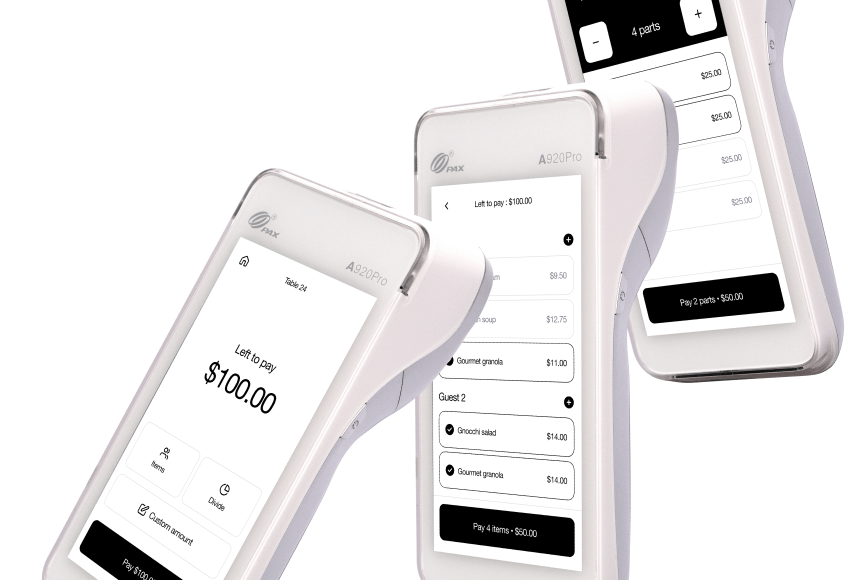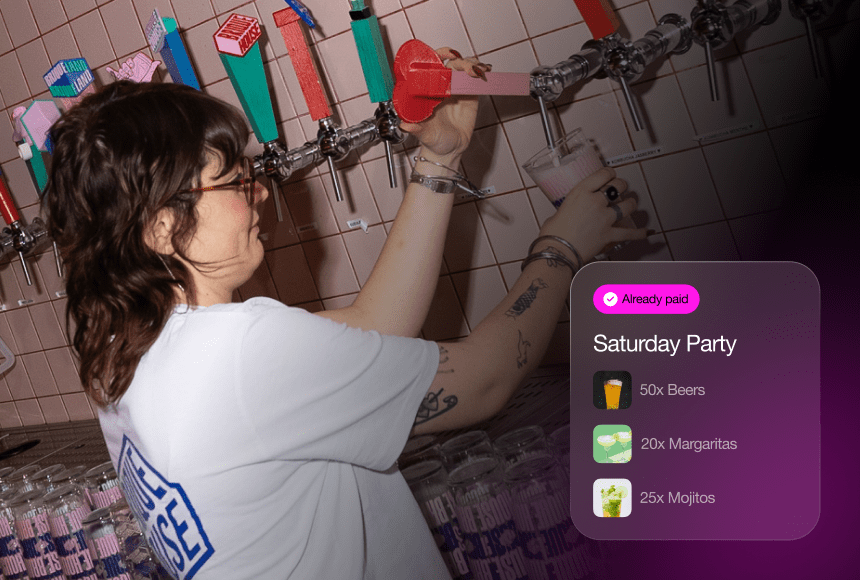
Exploring the Capabilities of an Advanced Card Reader in Your Restaurant
Beyond Basic Payments
A few years ago, a smart terminal did little more than process credit cards. It might have accepted magnetic stripes, maybe chip-and-PIN, and that was about it. Today, those same devices have transformed into multifunctional tools, serving as mini command centers for modern restaurants.
According to the National Restaurant Association, a significant number of dining venues are ditching old-fashioned payment processes to adopt more advanced, intelligent solutions. With features ranging from loyalty integration to on-the-fly menu updates, these next-generation terminals help elevate efficiency, reduce errors, and enhance the dining experience. Let’s dive into the diverse functionalities that define a smart terminal—and how they can shape your restaurant’s day-to-day operations.
All-in-One Payment Acceptance
At its core, a smart terminal’s primary job is still to handle payments. But unlike the simple card readers of the past, modern devices support multiple methods in one streamlined flow:
- Chip and Magnetic Stripe: Essential for covering legacy bank cards, plus the more secure EMV chip transactions.
- Contactless (NFC): Tap-to-pay with smartphones, smartwatches, or NFC-enabled credit cards. Quick, hygienic, and increasingly popular.
- QR Code Scanning: Some systems generate a code diners can scan with their phone to pay, allowing minimal device handling.
By catering to every major payment method, you remove barriers that might frustrate customers. Whether they prefer Apple Pay, a chip card, or even a loyalty points wallet, an intelligent handheld can juggle them all without missing a beat.
Tableside Ordering and Editing
One of the biggest leaps from old-school machines is the integration of ordering capabilities. A traditional card reader was solely for processing the bill—whereas a smart terminal can double as a device for placing and modifying orders. This is especially useful in table-service environments:
Staff no longer have to dash to a central POS terminal every time a guest changes an order. Instead, they can:
- Submit a new appetizer or dessert request right there at the table
- Update dishes if a diner changes their mind about a side or cooking style
- See real-time item availability—if you’ve run out of a certain dish, the device can flag it instantly
This immediate feedback loop lessens the chance of mistakes, speeds up service, and keeps staff closer to guests rather than tethered to a bulky stationary system.
Tipping Features that Boost Gratitude
Tipping can be awkward if guests are scribbling on a receipt or uncertain about fair amounts. Modern smart terminals simplify and encourage tipping in a subtle, user-friendly way:
- Pre-Set Percentages: Quick taps for 15%, 18%, or 20% ensure no one is fumbling with mental math.
- Custom Fields: If guests want to tip more—or less—the device allows easy manual entry of exact amounts.
- Transparent Summaries: Each tip appears on-screen, so diners and servers alike know exactly where things stand.
Because it’s so straightforward, diners often leave bigger or more consistent tips, rewarding service staff and fostering a healthier work environment.
Loyalty and Rewards Integration
For many restaurants, rewards programs can be crucial to driving repeat business. Yet signups or redemptions can fail if they’re too complicated. Smart terminals often fix that by embedding loyalty steps directly into the checkout flow:
- Easy Enrollment: A single tap or minimal data entry lets newcomers join mid-transaction, without separate forms or apps.
- Instant Reward Application: Regulars see their point balance on the screen and can apply discounts or freebies before finalizing the tab.
- Upsell Prompts: The terminal might highlight offers like “Unlock a free dessert if you upgrade to VIP membership!” as they pay.
Having loyalty and payment coexist in one place means a greater portion of diners will opt in, paving the way for stronger relationships and more consistent revenue.
Real-Time Menu Updates and Availability
Gone are the days when a restaurant ran out of a popular entrée and servers only learned after placing the order in the back. Many smart handhelds link with your inventory or POS so staff can instantly see if an item is out of stock:
- Live Status: If the kitchen flags an item as unavailable, it disappears or gets grayed out on the device’s ordering screen.
- Automatic Alerts: Low-stock notifications can pop up if your number of burger patties or salmon fillets hits a predefined threshold.
- Seasonal Swaps: Updating daily specials or happy-hour items mid-shift is easy, ensuring no confusion about the current menu.
This real-time synchronization dramatically reduces the chance you’ll have to return to the table apologizing that a guest’s chosen dish can’t be fulfilled.
Offline Mode for Unstable Connections
Even the best Wi-Fi can fail under peak loads or if your building structure is less than connectivity-friendly. A robust card reader, or smart terminal, typically includes an offline mode:
This means you can still process payments, store transaction data locally, and sync everything once the connection revives. Staff don’t need to scramble for a backup method, and your guests don’t endure awkward payment interruptions. While offline, some advanced terminals limit certain features (like real-time inventory), but the basic payment flow remains intact—crucial for high-traffic rushes.
Analytics and Reporting
A standout feature of smart handhelds is the ability to capture granular data. Restaurants can then analyze:
- Popular Payment Methods: Knowing how many prefer NFC or chip might shape future promotions or device upgrades.
- Peak Payment Times: If you notice a surge of checkouts at 7 pm, you can staff or plan accordingly.
- Tip Averages: Compare server performance or see if certain table configurations yield higher gratuities, guiding staff training and incentive programs.
Because data is collected in real-time, management can drill down on daily or weekly trends without waiting for end-of-month tallies.
Receipt Customization and Branding
Old-school receipts can be dull: a list of items, a total, and that’s it. A smart terminal can generate receipts—printed, emailed, or texted—that reinforce your brand’s personality. Possible customizations include:
- Logos and Colors: Add your restaurant’s logo, font styles, or brand color highlights.
- Personalized Messages: “Thank you for dining with us! Next time, show this receipt for a free appetizer” fosters repeat visits.
- Social Media or Review Links: Encourage happy diners to leave feedback, right on the receipt. A small mention like “Loved your meal? Drop us a review!” can boost your online reputation.
A branded receipt—even digital—leaves a lasting impression, turning the usually mundane checkout into one more positive touchpoint.
Staff Performance Monitoring
Because each user logs in with a unique ID, smart terminals track transactions by server. This level of granularity aids in:
- Accountability: If there’s a void, refund, or discounted bill, you can see who processed it and why.
- Training Insights: Management might spot that a particular team member consistently has slower checkout times or lower tips, prompting constructive coaching.
- Reward Programs for Staff: Metrics like upsells or positive feedback can feed into employee recognition systems, boosting motivation.
When servers understand that accurate data supports fairness and potential bonuses, they often embrace the terminal’s capabilities more enthusiastically.
Contactless and Hygienic Approaches
In a post-pandemic landscape, many diners appreciate minimal-contact options. Smart terminals can limit physical exchanges:
- Tap-to-Pay: A quick bump of the phone or card avoids shared surfaces or handing over the card to the server.
- QR Pay: The terminal might display a unique code, letting guests finalize everything on their own phone.
- Easy Sanitization: Modern devices often have smooth surfaces that are quickly wiped down, reducing contamination risk between checks.
Offering this peace of mind aligns with evolving diner expectations around health and safety, potentially fostering a feeling of trust and care.
Cloud-Based Access for Management
Most advanced solutions operate in the cloud, letting owners or managers log in remotely for real-time oversight:
- At-a-Glance Sales: Monitor daily revenue from a tablet or phone, even if you’re off-site.
- Live Inventory Adjustments: If a manager notices an unexpected run on a certain dish, they can push updates or reorder stock from anywhere.
- Cross-Location Harmony: Multi-unit restaurants can unify data across branches, comparing performance or centrally rolling out new promotions.
By removing the need to physically be in the restaurant for key updates, cloud-based access saves time and grants operational agility.
Integration with Solutions Like Sunday
Leading platforms such as sunday often embody many of these smart terminal features in a polished, user-friendly interface. By merging contactless payment, easy QR scanning, tipping suggestions, and loyalty sign-ups, a solution like sunday can deliver:
- Unified Experiences: All from one device, your team can handle orders, apply discounts, prompt feedback, or accept various payment types.
- Consistent Design: Branded, streamlined checkout screens create an elegant, memorable final step for the diner.
- Frictionless Setup: Because it’s built for hospitality, the learning curve is minimal, meaning staff adopt it quickly, and guests find it intuitive.
Whether you pick sunday or another robust platform, choosing a system with proven reliability and an all-inclusive approach ensures minimal tech headaches and maximum guest convenience.
Why These Features Matter
At the heart of it all, a smart handheld is about elevating the dining journey. It eliminates waiting, confusion, or billing errors, letting your service shine in ways that matter:
- Guests see your restaurant as modern, efficient, and considerate of their time.
- Servers can focus on heartfelt hospitality—like suggesting that perfect bottle of wine—instead of juggling receipts or manual corrections.
- Management gains immediate insights into what’s selling, who’s excelling, and where improvements lie, making it easier to adapt quickly.
It’s a synergistic win—for diners, who experience smooth checkouts, for staff, who reduce tedious tasks, and for operators, who get better data and cost control.
Making an Informed Decision
If your restaurant is on the fence about upgrading, step back and consider the bigger picture: which smart terminal functionalities align with the problems you most want to solve? Maybe you need simpler tip flows to stabilize staff morale. Perhaps your biggest issue is how frequently you run out of certain dishes mid-shift—and you’d love real-time inventory integration. Or you dream of launching a loyalty program that doesn’t require separate steps at the register.
By mapping out needs first, you’ll pinpoint the features that truly matter, rather than getting dazzled by bells and whistles that won’t actually help your bottom line or improve guest satisfaction. The best approach is deliberate, matching the device’s capabilities to your specific pain points and growth ambitions.
Elevating Service for the Future
Gone are the days when a restaurant’s payment devices just read credit card stripes. The new wave of smart terminals harnesses a wide range of functionalities to optimize every aspect of the service cycle. From real-time menu changes and integrated loyalty to transparent tipping and offline resilience, these features reflect a restaurant culture centered on efficiency and guest delight.
And as competition intensifies, offering a frictionless, tech-friendly checkout can separate your restaurant from those still clinging to older workflows. By embracing the enhanced capabilities of a smart terminal—or even pairing them with advanced platforms like sunday—you’ll not only meet customers’ rising expectations but also nurture a streamlined, empowered environment where staff thrive and diners remember your spot for all the right reasons.
Find out more today
Drop us your details below and we’ll reach out within the next 24h
The payment terminal to make your operation simpler.
Connected to your POS, we offer the only payment terminal specifically designed for restaurants.



